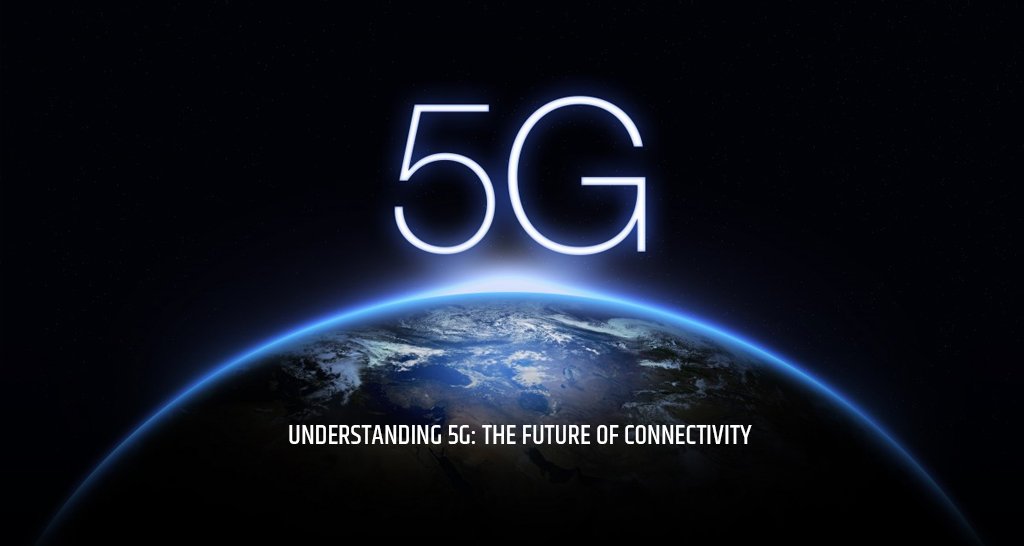Introduction to 5G Technology
5G technology represents the fifth generation of mobile communication. It is an evolution of previous generations, particularly 4G, and is designed to meet the growing demand for faster and more reliable connectivity in a world increasingly driven by digital interactions. At its core, 5G aims to enhance both the speed and efficiency of data transmission, significantly improving user experiences across various applications. The key characteristics of 5G include higher bandwidth, reduced latency, and the ability to connect a substantially greater number of devices simultaneously.
The most notable improvement that 5G offers over 4G is its remarkable speed; 5G can achieve data rates surpassing 10 Gbps under optimal conditions. This advancement can facilitate seamless streaming of high-definition video content, support the use of augmented and virtual reality technologies, and enable rapid downloads of large files. Moreover, 5G technology substantially reduces latency, with potential response times as low as 1 millisecond. This reduction is vital for applications requiring real-time feedback, such as autonomous vehicles and remote surgery.
The development of 5G technology was driven by the increasing need for efficient connectivity in various sectors, including healthcare, education, transportation, and entertainment. As the number of smart devices continues to grow, a shift toward interconnected systems becomes essential. 5G’s ability to support a vast number of devices in densely populated areas ensures that the infrastructure is equipped to handle the demands of an internet of things (IoT) ecosystem. As a result, 5G is not only an enhancement to mobile technology but a foundational step towards creating a more interconnected world.
Understanding 5G Technology
5G technology represents a significant leap in mobile communication, operating on a new architecture designed to enhance speed, efficiency, and connectivity. Unlike its predecessors, 5G leverages a more extensive spectrum, utilizing frequencies in the sub-6 GHz range as well as millimeter-wave bands (24 GHz and above). This wide spectrum allocation enables 5G to deliver ultra-fast data rates, ultra-reliable low latency, and massive device connectivity.
The Architecture of 5G
The architecture of 5G is built upon several key components. It comprises a diverse range of technologies that integrate to provide seamless connectivity. Notably, small cells play a crucial role in this network. These low-powered radio access nodes are spread throughout urban areas, enhancing coverage and capacity. They are instrumental in meeting the demands of high user density and data traffic, ensuring that users maintain a stable connection even in crowded environments.
Advanced Technologies Enabling 5G
Another significant component of 5G technology is beamforming. This advanced technique allows the network to direct signals towards specific users rather than broadcasting them uniformly in all directions. By concentrating the signal, beamforming reduces interference and improves the overall quality of connectivity. Additionally, the use of massive MIMO (Multiple Input Multiple Output) technology is prevalent in 5G networks. This approach involves deploying numerous antennas at the base stations, which can simultaneously serve multiple connections, increasing capacity and performance.
Conclusion
In summary, the technical foundation of 5G hinges on a combination of its architectural advancements, spectral efficiency, and innovative technologies like small cells and beamforming. Understanding these elements provides valuable insight into how 5G enhances connectivity and sets the stage for future advancements in communication technology.
Key Benefits of 5G Connectivity
The advent of 5G technology marks a significant advancement in telecommunications, presenting numerous key benefits that enhance connectivity. Chief among these advantages is the remarkable increase in speed. With data transmission rates potentially exceeding 10 gigabits per second, 5G enables users to download large files, stream high-definition content, and engage in seamless video conferencing with unprecedented ease. This enhanced speed is crucial for applications that require immediate data transfer, thereby redefining user experiences across various digital platforms.
Another vital benefit of 5G is the reduction in latency, which refers to the delay before a transfer of data begins following an instruction. 5G networks promise latency as low as one millisecond, a significant improvement over 4G networks. This near-instantaneous response time is essential for applications such as autonomous vehicles and remote surgery, where every millisecond matters. Additionally, lower latency enhances the performance of augmented reality (AR) and virtual reality (VR), opening up new possibilities in gaming and training simulations.
Moreover, 5G technology supports a substantially higher number of devices connected simultaneously, thanks to its ability to utilize spectrum more efficiently. This feature is particularly beneficial in densely populated areas and large events, where traditional networks struggle to maintain connectivity under heavy loads. In sectors such as healthcare, being able to connect multiple devices simultaneously facilitates efficient patient monitoring through IoT devices, while in transportation, it enhances communication within smart vehicles and connected infrastructure. Furthermore, smart cities benefit from improved network capabilities to manage resources effectively, ultimately leading to enhanced quality of life for residents.
In essence, the key benefits of 5G connectivity not only elevate user experiences through increased speed and reduced latency but also enable a broader array of applications across various sectors. The implications for industries such as healthcare, transportation, and urban development are profound, fostering a more interconnected and efficient future.
Impact on Industries and Economic Growth
The introduction of 5G technology is set to revolutionize numerous industries, unlocking new opportunities for innovation and efficiency. This next generation of connectivity will facilitate advancements in the Internet of Things (IoT), autonomous vehicles, and enhanced mobile broadband experiences, prompting a shift in how businesses operate and engage with their customers. By significantly increasing data transfer speeds and reducing latency, 5G will enable seamless connectivity across a myriad of devices, fostering the growth of smart cities and improved infrastructure.
In the realm of IoT, for example, 5G will enable smarter sensors and devices to communicate with one another in real-time, allowing for more effective monitoring and management of resources. This will greatly benefit sectors like healthcare, where remote patient monitoring and telemedicine can flourish. Likewise, the transportation industry will experience a transformation with the proliferation of autonomous vehicles, which require reliable and instantaneous communication for safe operation. This technology promises to enhance efficiency, reduce traffic congestion, and lower emissions, delivering substantial environmental and economic benefits.
Beyond its effects on technology and industry operations, the economic implications of 5G deployment are profound. Research indicates that the implementation of 5G could lead to job creation in various sectors, ranging from telecommunications to technology and services. Moreover, the increased capabilities of connected devices and data analysis can drive GDP growth, fostering innovation across businesses. As companies leverage 5G connectivity to develop new products and services, they will also enhance productivity, resulting in a more competitive economic landscape. Overall, the impact of 5G on various industries and economic growth cannot be overstated, representing a pivotal point for progress and development moving forward.
Challenges in 5G Implementation
The implementation of 5G technology, while promising enhanced connectivity and performance, faces a multitude of significant challenges that must be addressed to facilitate widespread adoption. One of the primary obstacles is the substantial cost associated with upgrading existing infrastructure. Unlike previous generations of wireless technology, 5G requires a dense network of small cells and antennas to deliver its full potential. This necessitates significant investment in both the physical infrastructure and in advanced technology, which can be financially burdensome for many telecommunications providers.
In addition to financial considerations, regulatory hurdles pose another challenge in the rollout of 5G. Different regions and countries may have varying regulations that govern the use of frequencies and the placement of infrastructure. Navigating this complex landscape can be time-consuming and may lead to delays in deploying 5G networks. Regulatory bodies need to strike a balance between fostering innovation and ensuring public safety and environmental concerns are addressed, which can introduce further complications in the process.
Furthermore, security concerns related to 5G networks cannot be overlooked. With the increased number of connected devices and the volume of data processed, the potential for cyber threats escalates. The complexity of 5G infrastructure presents opportunities for malicious activities, and therefore, service providers must implement robust security measures. Ensuring that users’ data is protected while maintaining the speed and efficiency of the network is a critical challenge that requires ongoing attention and development.
In summary, while 5G technology promises to transform connectivity, addressing the challenges of infrastructure costs, regulatory complexities, and security concerns is essential for a successful and sustainable rollout. Stakeholders must collaborate effectively to mitigate these issues and unlock the potential of next-generation connectivity.
Global 5G Rollout: Current Status and Future Prospects
The rollout of 5G technology has become a critical focal point for countries worldwide. As of late 2023, numerous nations have initiated or expanded their 5G infrastructure, heralding a new era of connectivity. The leaders in 5G deployment include countries such as South Korea, the United States, and China, all of which have made significant investments to create expansive networks. South Korea, often recognized as a pioneer of 5G technology, boasts over 99% coverage in its metropolitan areas, providing users with superior speeds and lower latency. The United States has also made strides, with major telecommunications companies rolling out services in urban and suburban regions.
Meanwhile, regions such as parts of Europe and Africa are lagging in their progress toward widespread 5G adoption. Factors contributing to this delay often include regulatory challenges, funding limitations, and varying infrastructure readiness. For example, while the European Union has outlined ambitious goals for broadband expansion, disparities remain among member states, influencing their individual 5G deployment timelines. Similarly, countries in Africa face additional hurdles, such as access to necessary technology and investment, putting them at a disadvantage in the global race for connectivity.
Looking ahead, predictions indicate that the global momentum for 5G will continue to build, with widespread adoption expected to grow by the mid-2020s. Innovations in technology, such as the introduction of independent (SA) architectures and enhanced spectrum management, are anticipated to vastly improve connectivity options. As these advancements unfold, nations lagging in deployment will likely benefit from knowledge transfer and investment opportunities. The integration of 5G into industries such as healthcare, transportation, and entertainment will further drive demand for next-generation connectivity, emphasizing the importance of collaboration among countries to achieve equitable global access to this transformative technology.
5G and the Internet of Things (IoT)
The advent of 5G technology marks a significant milestone in the field of connectivity, particularly for the Internet of Things (IoT). As a high-speed, low-latency wireless communication system, 5G is poised to transform the way IoT devices operate and interact. The integration of 5G with IoT offers several advantages, including enhanced performance, improved reliability, and the capability to support a massive number of connected devices simultaneously.
One of the critical improvements brought by 5G is its ability to facilitate real-time data transfer. This feature is particularly beneficial in applications such as smart cities, where data collected from various sensors must be processed instantly to optimize resource usage. For instance, traffic management systems can harness 5G to analyze data from connected vehicles and traffic signals, enabling more efficient routing and reducing congestion.
Moreover, the low latency associated with 5G technology is essential for applications that require instantaneous responses, such as telemedicine and autonomous vehicles. In telemedicine, 5G allows healthcare professionals to perform remote surgeries using robotic tools with minimal delay, thus improving patient outcomes. In the realm of autonomous driving, 5G connectivity ensures vehicles can communicate with each other and their surroundings, allowing for safer and more efficient travel.
Case studies further illustrate the capabilities of 5G in enhancing IoT applications. For example, smart agriculture initiatives utilize 5G-enabled sensors to monitor soil conditions and crop health, allowing farmers to make data-driven decisions that increase yield and reduce waste. Similarly, smart grids leverage 5G for real-time monitoring and management of energy distribution, leading to improved efficiency and sustainability.
In conclusion, the integration of 5G technology with IoT signifies a transformational shift in connectivity, enabling smarter and more efficient systems that enhance various aspects of modern life.
The Role of 5G in Smart Cities
The introduction of 5G technology stands as a monumental leap towards the realization of smart cities. This next generation of connectivity promises to revolutionize urban environments by facilitating advanced infrastructure and significantly improving the quality of life for residents. Through enhanced speeds and reduced latency, 5G enables a multitude of applications that are crucial for effective urban planning and resource management.
One of the primary advantages of 5G in smart cities is its capacity to support a vast array of Internet of Things (IoT) devices. As cities become increasingly reliant on interconnected systems for everything from traffic management to waste collection, the efficiency of these networks becomes paramount. The high bandwidth capacity of 5G allows cities to aggregate data from various sources in real-time, leading to smarter decision-making and resource allocation. For instance, with real-time data analysis on traffic patterns, municipal authorities can optimize traffic signals to reduce congestion and pollution.
Moreover, the integration of 5G can enhance public services significantly. Emergency response teams benefit from improved communication, ensuring faster service delivery during critical situations. Additionally, smart infrastructure equipped with 5G connectivity enables utilities to monitor resource usage more effectively, reducing waste and costs. For example, smart meters can provide real-time data on electricity and water consumption, promoting sustainable practices among residents and businesses alike.
Furthermore, 5G facilitates enhanced connectivity for residents, providing them with immediate access to essential services and information. This is particularly evident in health services, where telemedicine and remote monitoring become more accessible, thus improving public health outcomes. By creating an ecosystem where all parts of the urban landscape are interconnected, 5G technology plays a crucial role in the development of smart cities, making them responsive, efficient, and more livable for their inhabitants.
Conclusion: The Future of Connectivity
As we look ahead to the era of 5G technology, it is clear that this advancement will play a pivotal role in shaping the future of connectivity. The transformative potential of 5G extends beyond mere speed enhancements; it offers a fundamentally different framework for how individuals, businesses, and governments will interact and function in a hyper-connected world. With significantly lower latency, higher data transfer rates, and the ability to connect a multitude of devices simultaneously, 5G technology promises to revolutionize various sectors, including transportation, healthcare, and urban development.
Individuals can expect a more enriching digital experience, characterized by seamless streaming, augmented reality applications, and increased access to remote services. Businesses will benefit from improved operational efficiency, data analytics capabilities, and the facilitation of Internet of Things (IoT) devices, which can lead to innovative products and services. While the promise of 5G is immense, it also necessitates careful preparation. Both individual users and corporations must adapt to new technologies and practices to fully leverage the advantages of 5G connectivity.
Governments, too, have a crucial role in fostering an environment that accelerates 5G deployment. They must invest in infrastructure, establish regulatory frameworks, and promote research and development that align with the future demands of 5G technology. By prioritizing policies that support equitable access to high-speed internet, authorities can help bridge the digital divide, ensuring that all communities benefit from the advancements offered by 5G.
In conclusion, the transition to a 5G-enabled world represents an opportunity for growth and innovation across various dimensions of society. By embracing this change and actively preparing for its implications, we can collectively harness the potential that 5G connectivity holds for a more integrated and efficient future.



